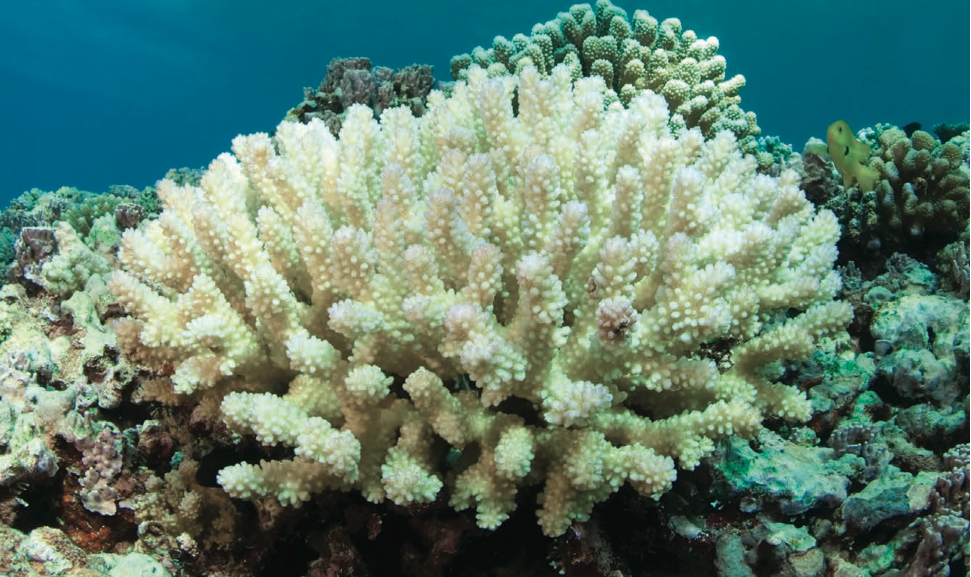Data Diving To Save Coral
New tools could play important role in the race to save coral reefs from climate change
If you’re not afraid of ghosts, try visiting the warm, shallow depths of the ocean. What you’ll find there should frighten everyone.
Once lush and vibrantly colored, many of these areas are now vast, ghostly graveyards dotted with the brittle skeletons of bleached coral. The reefs the coral formed once teemed with so much life and biodiversity that scientists referred to them as the “rainforests of the sea.” Sensitive to temperature spikes, coral reefs now appear a faded, ashen shadow of their former presence. Tragically, they become more endangered by the day.
The culprit in this frightening development? Rising water temperatures resulting from climate change.
Taking Up Arms
A Northwestern Engineering research team is now working feverishly to bring these vulnerable communities back from the brink of extinction. By using data to understand what makes certain coral populations more susceptible to collapse, the researchers hope to halt further destruction and breathe life back into the ocean floor.
“Coral is not an independent organism,” says Luisa Marcelino, a research assistant professor of civil and environmental engineering. “It depends on the algae that live in its tissue to give it food. High temperatures break up that partnership, and the coral essentially starves.”
Marcelino and Vadim Backman, the Walter Dill Scott Professor of Biomedical Engineering, lead an interdisciplinary research team with The Field Museum of Natural History to help combat coral’s bleaching crisis. The husband-and-wife team has worked together for years: Marcelino, a longtime diver, uses her background in molecular biology to understand what makes certain coral more susceptible to bleaching. Backman, an expert in cancer diagnostics, uses his disease detection tools to observe the optical properties of coral skeletons.
The pair has now developed two tools to improve understanding and classification of coral:
- an algorithm that ranks the thermotolerance of coral’s symbiotic algae
- the first-ever global index of vulnerable coral
Algae Algorithm
When coral expels its algae, it is a violent act that leaves behind a stark white skeleton. Interestingly, this does not happen in every case. Some genetic types of algae can tolerate the changing climate’s increasing temperature better than others. Coral with thermotolerant algae often recover from bleaching or do not bleach at all. Coral without this hardy type of algae face mortal danger.
“Coral not associated with thermotolerant algae are at the biggest risk,” Marcelino says.
Up until now, studying and fully understanding algae’s susceptibility to heat have proven incredibly difficult given the more than 400 different types of coral algae and thousands of different coral reefs worldwide. Algae are also notoriously difficult to cultivate in the laboratory.
But finding a solution has become more urgent than ever. The world is currently experiencing the longest global coral bleaching event ever recorded. Knowing which coral colonies are associated with the more thermosensitive algae could help conservationists focus their efforts to curb the crisis.
Combining all algae studies published prior to February 2015, Marcelino, Backman, and their team developed a novel algorithm that ranks which genetic types are the most thermotolerant and which are the most thermosensitive. Using this information, scientists could aid preservation by helping shield sensitive colonies from further risk factors, such as tourism, overfishing, and pollution. Pinpointing the most thermotolerant algae could also help researchers breed more robust coral in the laboratory.
Indexing Coral
Ranking the vulnerability of 110 of the most common genetic types of algae, the algorithm serves as a companion piece to Marcelino and Backman’s earlier work to standardize measurements of different coral species’ vulnerability to thermal stress.
That work established the first-ever quantitative global index detailing which of the world’s coral species are most susceptible to bleaching and most likely to die. Based on a massive amount of publicly available, historical data, researchers and conservationists can use the index to compare bleaching responses of corals throughout the world and to predict which corals may be most affected by future bleaching events.
The index, which represents the most abundant species and close to half the world’s coral from 316 sites, ranks the corals’ susceptibility to thermal stress from 1 to 100, with the most susceptible first on the list. An impressive feat of data science, the index emerged from a meta-analysis of all available historical records on coral bleaching from 1982 through 2006.
“Using very large data sets, we have teased out valuable information that will help researchers identify global trends and learn about individual corals,” Backman says. “To make our analysis possible, we applied financial theory conventionally used to predict changes in stock prices in response to stock market variations to model how individual corals react to a change in the environment.”
Although coral bleaching is occurring to an unprecedented degree, the researchers remain hopeful that their data can make a difference. Timothy D. Swain, a research associate in Marcelino’s laboratory and first author on both studies, says, “Coral bleaching is an inescapable example of the effects of climate change. We can see it with our eyes, and we also clearly see the progression of climate change in our data. Our goal is to use the data to understand what drives bleaching and to learn how we can protect the world’s coral reefs.”

